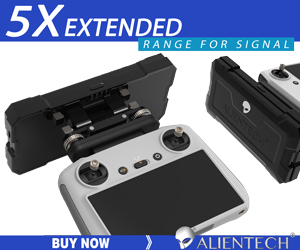That is actually not how they work. Polarization strength is determined by your angle to the sun regardless of what you set the rotating dial to (i.e. where polarization might be almost eliminated in one direction might be very strong in another as soon as you turn the drone). Unless you maintain a constant heading for your entire flight, you are going to run into uniformity issues.
Polarization is strongest 90 degrees to the sun in any direction, and eliminated at 0 and 180 degrees to the sun. The rotating dial does not turn polarization on or off, but rather alters the angle at which maximum polarization is achieved (to a point - it's not like an on/off switch). You never want to just fly around casually with a polarizer on as you will get very uneven footage. Polarizers have their place because the effect cannot be replicated in software, but they are extremely annoying to use on drones. You need to set the polarization on the ground and fly a very specific unidirectional flight path - as soon as you alter from that, your footage will change, which generally people do not want happening mid-shot. The level of polarization also effects your exposure, not just the color of the image, so it's just not worth it most of the time IMHO unless you have a carefully planned flight over a coal reef or something where polarizers add a dramatic effect. I have NDPL's and I use normal ND's 99% of the time.
I actually have an issue with how Polar Pro advertises their "Vivid" series of filters, as it is quite misleading. Buyer beware I suppose to know how polarizers work, but reading their marketing materials gives the buyer the impression that they will just make your footage more vivid with no caveats, of which there are many.




 I think that is a good plan.
I think that is a good plan.






